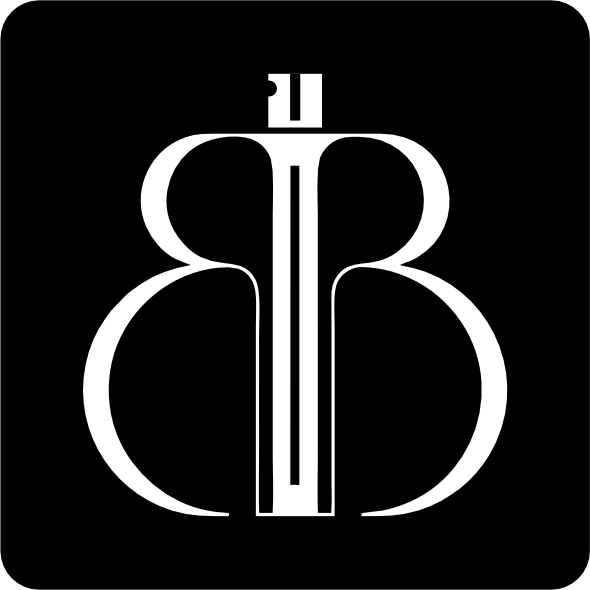Table Of Contents
- 1 Introduction
- 2 Myth #1: Natural Hair Doesn’t Grow
- 3 Myth #2: Frequent Washing Damages Natural Hair
- 4 Myth #3: You Can’t Straighten Natural Hair Safely
- 5 Myth #4: Natural Hair is Hard to Manage
- 6 Myth #5: Natural Hair Products Are Too Expensive
- 7 Myth #6: Natural Hair Can’t Be Colored
- 8 Myth #7: Protective Styles Guarantee Hair Growth
- 9 Conclusion
Introduction
In the vibrant world of natural hair care, we have hair myths and misconceptions that often swirl around like a tangled mane. It’s a world where every curl, coil, and kink tells a unique story, but it’s also a world where misunderstandings about hair growth, maintenance, and styling techniques can easily take root. From the widely held belief that natural hair refuses to grow to the misconceptions about washing, straightening, and managing it, we’ll address each myth with precision and clarity. Along the way, we’ll provide expert insights, tips, and strategies to empower you in your quest for healthy, vibrant natural hair.
Myth #1: Natural Hair Doesn’t Grow
Many people believe the myth that natural hair simply refuses to grow or grows at an agonizingly slow rate. It’s time to debunk this misconception and unlock the secrets of your hair’s growth potential.
Busting the Growth Standstill Hair Myths
Is your natural hair stuck in what seems like a perpetual growth standstill? Fear not, because your hair is constantly in a state of growth, rest, and shedding. This natural cycle, known as the hair growth cycle, plays a pivotal role in determining the length of your hair.
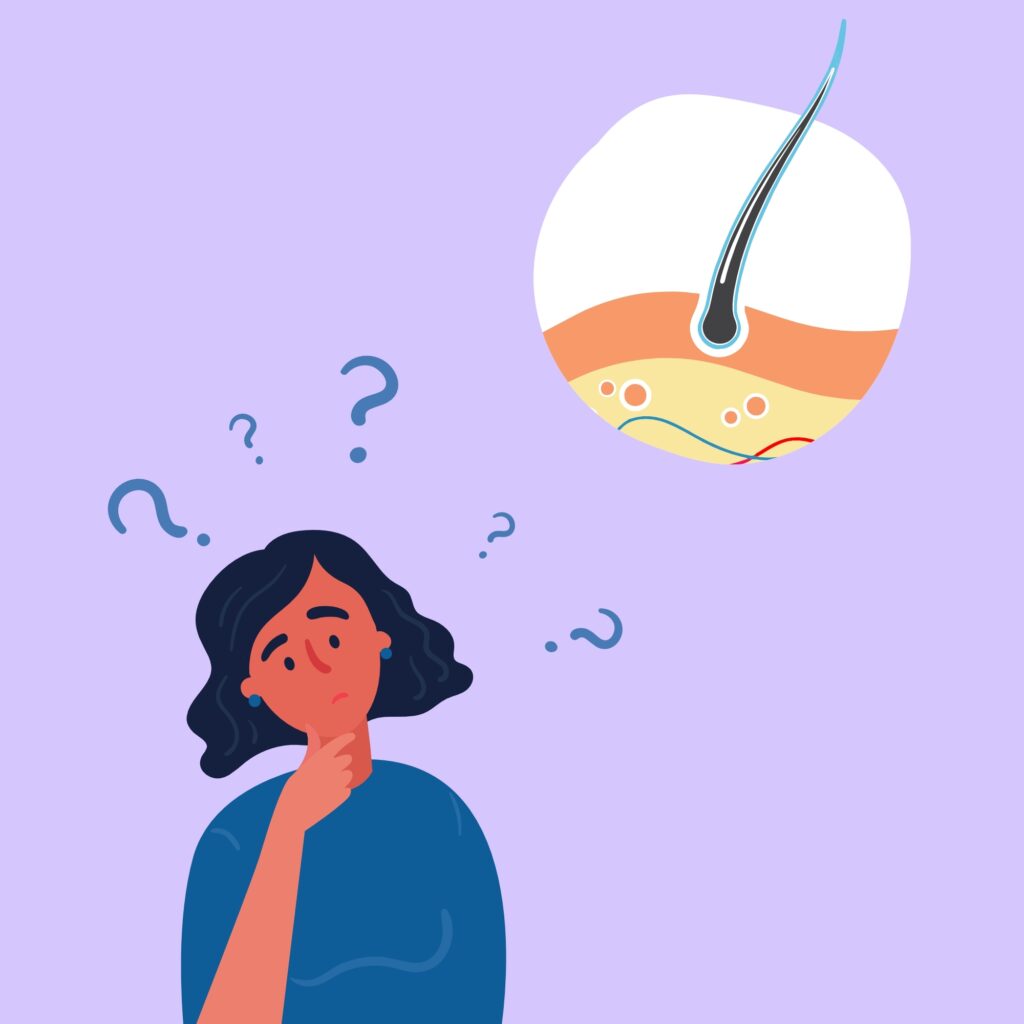
Understanding the Hair Growth Cycle
To debunk the growth standstill myth, it’s essential to comprehend the hair growth cycle. This cycle consists of three phases:
- Anagen Phase: This is the active growth phase where your hair follicles are busy producing new hair. The length of this phase varies from person to person, but it typically lasts from two to six years.
- Catagen Phase: This is a transitional phase where hair growth slows down and the hair follicles start to shrink. It lasts for about two weeks.
- Telogen Phase: In this phase, your hair is in a resting state and is eventually shed to make way for new hair. It lasts for around two to three months.
Tips and Tricks for Maximizing Hair Growth
- Nutrition Matters: A balanced diet rich in vitamins and minerals, particularly biotin, vitamin E, and iron, can promote healthy hair growth.
- Scalp Care: A clean and healthy scalp provides an ideal environment for hair growth. Regularly cleanse your scalp and stimulate blood circulation through gentle massages.
- Protective Styles: Protective styles like braids and twists can help retain length by reducing breakage. Just ensure they are not too tight to avoid hair damage.
- Trimming: Regular trims are paradoxically beneficial for hair growth. Trimming split ends prevents them from traveling up the hair shaft and causing more significant damage.
- Moisture and Hydration: Keep your hair adequately moisturized to prevent dryness and breakage. Hydrated hair is less prone to damage.
Addressing Common Misconceptions
Why do so many people believe that natural hair doesn’t grow? Let’s address some of the common misconceptions that perpetuate this myth and set the record straight.
Misconception #1: Natural Hair Has Reached Its Limit
One of the prevailing hair myths is that once your hair reaches a certain length, it stops growing. This misconception stems from the observation that some individuals experience slower growth after a certain point.
The Truth: While it’s true that hair growth rates can vary from person to person, your hair doesn’t have an inherent length limit. Factors like genetics, age, and overall health influence hair growth rate, but with proper care, you can encourage your hair to grow longer.
Misconception #2: Lack of Growth Equals No Growth
Many people mistake slower growth for no growth. When they don’t see significant changes in length over a short period, they assume their hair isn’t growing at all.
The Truth: Hair growth is a gradual process, and it’s often challenging to notice small changes on a day-to-day basis. Instead of obsessively checking for growth every day, focus on tracking it over several weeks or months.
Misconception #3: All Hair Types Grow at the Same Rate
Another common myth is that all hair types grow at the same rate. This leads to unrealistic expectations, especially when comparing your hair growth to others with different hair textures.
The Truth: Hair growth rates can indeed vary depending on your hair type. For example, people with coarser hair may appear to have slower growth due to the natural curl pattern, which makes it harder to see length changes.
Misconception #4: Hair Growth Stops with Age
Some believe that as you age, your hair inevitably stops growing or grows at an excruciatingly slow rate.
The Truth: While it’s true that hair growth might slow down with age for some individuals, it doesn’t mean it stops altogether. With proper care and attention, you can maintain healthy hair growth throughout your life.
Tips and Tricks for Addressing These Misconceptions
- Stay Patient: Remember that hair growth takes time. Be patient and consistent with your care routine.
- Set Realistic Goals: Establish achievable hair length goals that consider your hair type, genetics, and age.
- Celebrate Small Wins: Recognize and celebrate even minor length milestones to stay motivated.
- Document Your Journey: Take pictures to track your hair growth progress over time.
Myth #2: Frequent Washing Damages Natural Hair
The belief is that frequent washing of natural hair can cause damage. It’s time to uncover the truth about maintaining a clean scalp and employing gentle washing techniques to keep your hair healthy and vibrant.
The Importance of a Clean Scalp
Maintaining a clean scalp is a fundamental aspect of natural hair care. A healthy scalp provides the ideal environment for hair to thrive. Here’s why a clean scalp is crucial:
- Optimal Growth: A clean scalp encourages healthy hair growth by removing dirt, excess oils, and product build-up that can clog hair follicles. When follicles are clear, hair can grow freely.
- Dandruff Prevention: Regular cleansing helps prevent dandruff and other scalp conditions, ensuring your hair remains flake-free and comfortable.
- Balanced Sebum Production: Overwashing can strip the scalp of its natural oils, leading to dryness and increased oil production. Proper cleansing strikes a balance, keeping the scalp moisturized without overloading it.
Tips for Maintaining a Clean Scalp
- Determine Your Washing Frequency: The ideal washing frequency varies from person to person. Factors like hair type, activity level, and personal preference should influence how often you wash your hair.
- Choose the Right Shampoo: Opt for a sulfate-free shampoo that cleanses effectively without harsh chemicals that can strip your hair.
- Massage Your Scalp: While shampooing, gently massage your scalp to dislodge dirt and increase blood circulation. This can promote hair growth and maintain scalp health.
- Rinse Thoroughly: Ensure you rinse your hair thoroughly to remove all traces of shampoo and conditioner, which can lead to build-up if left behind.
Gentle Washing Techniques
Gentle techniques are key to preventing damage while keeping your hair clean and beautiful.
Why Gentle Washing Matters?
Aggressive washing methods can lead to several issues, including:
- Dryness and Breakage: Harsh scrubbing and rubbing can cause hair strands to become brittle and prone to breakage.
- Frizz and Tangling: Rough handling can rough up the hair’s cuticle, leading to increased frizz and tangling.
- Irritated Scalp: Vigorous washing can irritate the scalp, leading to discomfort and potential scalp issues.
Gentle Washing Tips and Tricks
- Use Your Fingertips: Instead of using your nails or the palms of your hands, use your fingertips to apply shampoo and massage your scalp. This reduces the risk of damage.
- Detangle Before Washing: Carefully detangle your hair with a wide-tooth comb or your fingers before washing to prevent knots and tangles from worsening during cleansing.
- Section your Hair: Divide your hair into sections to make washing more manageable. This ensures even distribution of products and reduces the risk of tangling.
- Condition your Ends: Apply conditioner mainly to the lengths and ends of your hair, where it’s needed most, and avoid the scalp to prevent excess oil buildup.
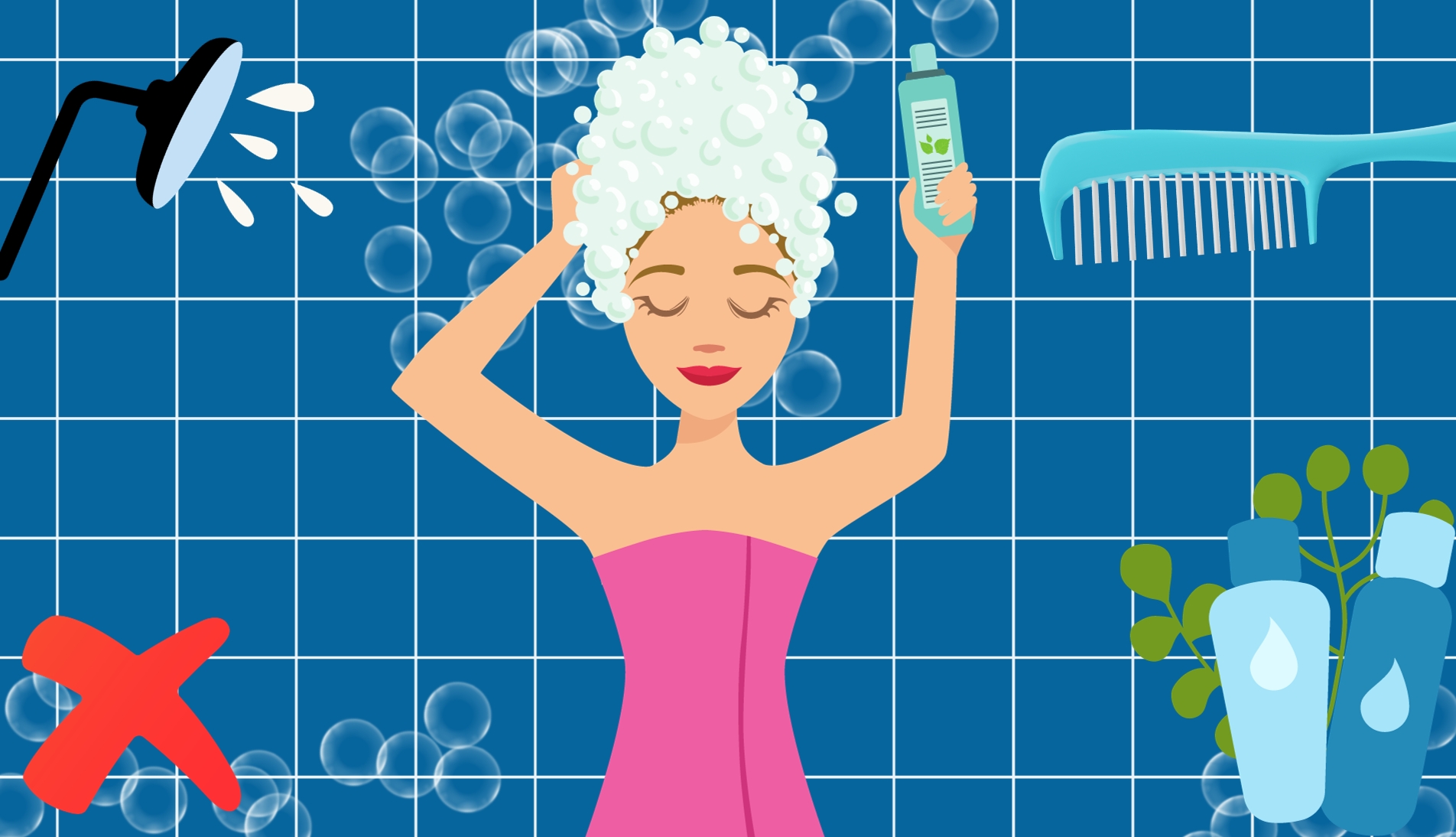
Don’t Make These Mistakes While Choosing Your Hair Shampoo

10 Reasons Why Your Natural Hair Is Not Growing
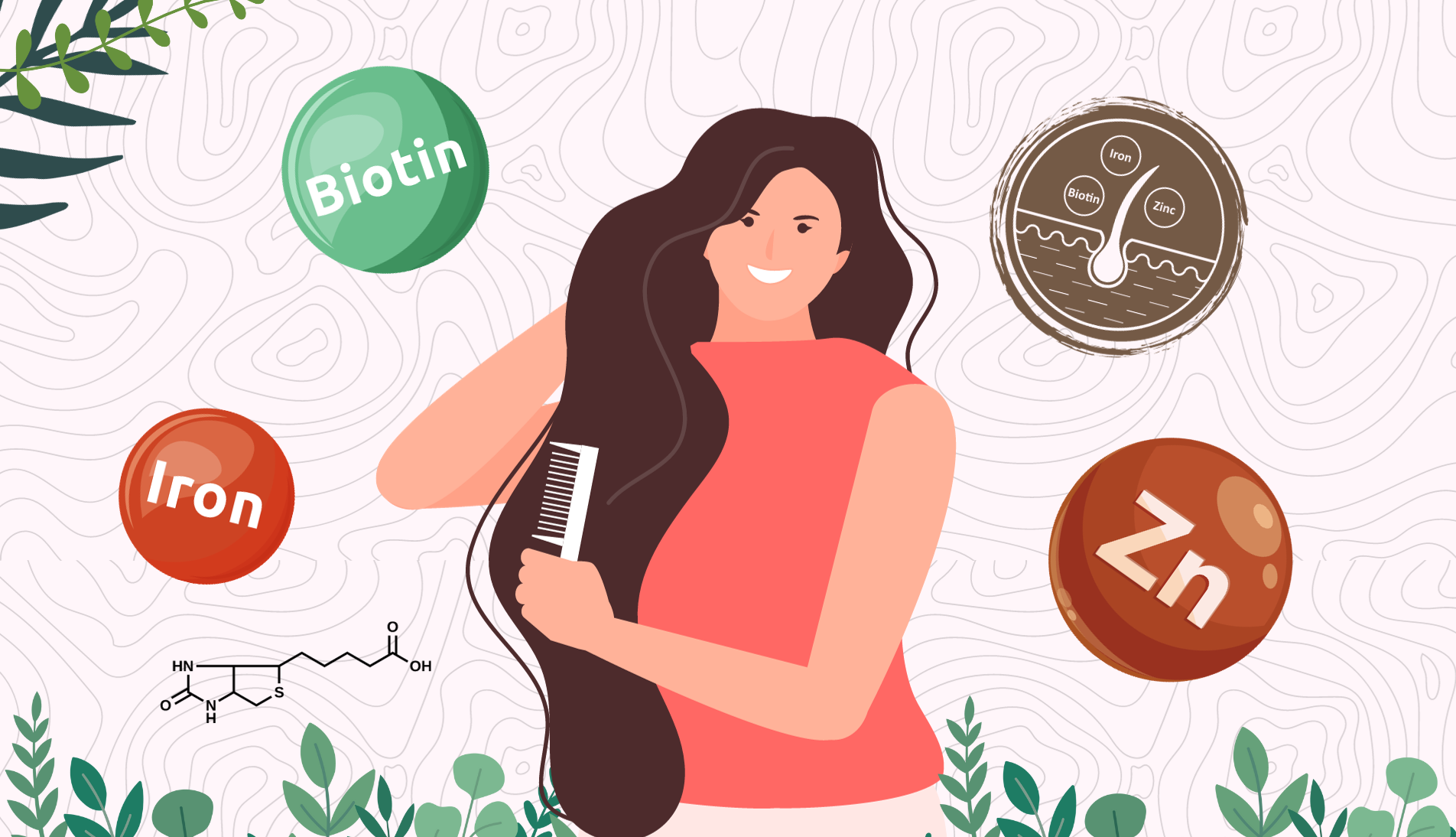
How Does Biotin Affect Our Hair Growth?
Myth #3: You Can’t Straighten Natural Hair Safely
The belief that straightening natural hair is inherently unsafe. We’ll demystify the world of heat styling and explore safe straightening strategies that will keep your natural hair healthy and gorgeous.
Demystifying Heat Styling
Heat styling has often been seen as a villain in the natural hair community, but it doesn’t have to be. Understanding the nuances of heat and its impact on your hair is the first step to demystifying this styling technique.
Understanding Heat Damage
- Heat damage occurs when excessive heat disrupts the protein structure of your hair, leading to issues like breakage, dryness, and loss of natural curl patterns.
- However, it’s important to note that using heat styling tools doesn’t automatically result in damage. It’s the misuse or overuse of these tools that can cause problems.
The Role of Heat Protectants
- Heat protectants are your hair’s best friend when it comes to heat styling. These products form a barrier on your hair shaft, shielding it from the direct impact of high temperatures.
- Look for heat protectants that contain ingredients like silicone or argan oil for added protection and shine.
Safe Straightening Strategies
We’ll delve into the realm guide to demystify heat styling, explore the tools of the trade, and discover the methods that will leave your hair both stunning and unscathed. Straighten with confidence and care, ensuring that your natural hair remains radiant and resilient.
Choosing the Right Tools
- Opt for high-quality flat irons or straighteners that allow you to control the temperature. Ceramic or tourmaline plates are preferable as they distribute heat more evenly.
- Use a flat iron with adjustable temperature settings and start with the lowest heat setting necessary to achieve your desired results.
Preparation is Key
- Begin with clean, well-moisturized hair. Deep conditioning before straightening can provide a protective barrier and reduce the risk of damage.
- Detangle your hair thoroughly before using any heat styling tools to prevent snagging and breakage.
Straightening Techniques
- Section your hair: Divide your hair into smaller sections for more manageable straightening. This ensures each strand receives the right amount of heat.
- Start at a lower temperature: Begin with a lower heat setting and gradually increase it as needed. Test a small section of hair first to ensure it straightens effectively without excessive heat.
- Use a comb-chase method: Run a fine-toothed comb or a brush through your hair while following with the flat iron. This helps to evenly distribute heat and create a sleek finish.
Maintenance and Aftercare
- Avoid excessive straightening: Limit the frequency of heat styling to reduce the risk of damage. Embrace your natural texture between straightening sessions.
- Invest in a silk or satin pillowcase to reduce friction and maintain your straightened style for longer.
- Maintain moisture: Continue to moisturize your hair even when it’s straight. Use a lightweight, non-greasy oil to seal in moisture.
Myth #4: Natural Hair is Hard to Manage
Natural hair, with its array of textures and patterns, is a crown of individuality and beauty. Yet, a pervasive myth suggests that managing it is an insurmountable challenge. Unlock the secrets to mastering your unique style.
Embracing Versatility
One of the most extraordinary aspects of natural hair is its incredible versatility. It can be styled in a myriad of ways, allowing you to express your personality and creativity. Here’s why embracing this versatility is key to mastering natural hair management.
The Beauty of Diversity
- Natural hair comes in various textures, from coily and kinky to wavy and curly. Embracing your hair’s unique texture is the first step to unlocking its full potential.
- Celebrate the diversity of natural hair by experimenting with different styles and looks. Whether you prefer a sleek bun, voluminous curls, or an afro, there’s a style that complements your natural beauty.
Healthy Hair Habits
- Healthy hair starts with a solid foundation. Ensure you’re nourishing your hair from within by maintaining a balanced diet rich in vitamins and nutrients.
- Develop a consistent hair care routine tailored to your hair type. This should include cleansing, conditioning, and moisturizing.
Mastering Natural Hair Management
From understanding your hair’s unique needs to crafting a tailored routine that promotes health and beauty, we’ll guide you on the path to effortless management. We will empower you to become the maestro of your own natural hair orchestra with our skills, techniques, and practices.
Understanding Your Hair Type
- Knowing your hair type is crucial for effective management. Identify whether you have type 3 (curly) or type 4 (coily /kinky) hair, as each type requires slightly different care.
Cleansing and Conditioning
- Choose sulfate-free shampoos and conditioners that cater to your hair type. These products gently cleanse and hydrate your hair without stripping away natural oils.
- Deep conditioning is your hair’s best friend. Incorporate it into your routine to provide your hair with the moisture it craves.
Detangling with Care
- Detangle your hair when it’s damp to minimize breakage. Use a wide-toothed comb or your fingers and work from the tips to the roots.
- Apply a detangling product or a natural oil to aid in the process.
Moisture is Key
- Natural hair thrives on moisture. Invest in a quality leave-in conditioner and hydrating products to maintain moisture throughout the day.
- The LOC (Liquid, Oil, Cream) method can be highly effective for sealing in moisture.
Protective Styling
- Protective styles, like braids, twists, and updos, can help retain length and reduce manipulation. Ensure they are not too tight to avoid hair damage.
- Remember to give your hair breaks between protective styles to prevent stress on the hair shaft.
Regular Trims
- Schedule regular trims to remove split ends and prevent them from traveling up the hair shaft, which can lead to more significant damage.
Myth #5: Natural Hair Products Are Too Expensive
The notion is that maintaining your natural locks requires a hefty investment in expensive products. We will dispel that myth through a landscape of cost-effective solutions that keep your natural hair healthy, vibrant, and thriving without breaking the bank.
Affordable Alternatives
Contrary to the common myth that natural hair care products are prohibitively expensive, there are numerous budget-friendly options and strategies that can help you maintain luscious, healthy locks without burning a hole in your pocket.
DIY Remedy: Nature’s Treasures
Nature has provided a wealth of ingredients that are not only affordable but also highly effective for natural hair care. Consider DIY hair masks using coconut oil, honey, yogurt, and aloe vera to nourish and condition your hair. Explore homemade leave-in conditioners and hair spritzes made from distilled water and aloe vera gel, which can help maintain moisture between washes.
Investing Wisely
While affordable alternatives are excellent for everyday care, there are moments when it’s wise to invest a bit more in your natural hair care regimen. Here’s how to make thoughtful investments that will pay off in the long run.
Quality over Quantity: The Power of Premium Products
- Consider investing in high-quality sulfate-free shampoos and conditioners. These products are often concentrated, requiring less per use, which means they last longer and are more cost-effective over time.
- Premium products may contain superior ingredients and formulas that can significantly benefit your hair’s health and appearance.
Targeted Treatments: Address Specific Concerns
- For specific hair concerns, such as excessive dryness, breakage, or hair loss, investing in targeted treatments like deep conditioners, hair masks, or serums can be a smart choice. These treatments often have concentrated ingredients to address specific issues.
Consultation with a Professional: Expert Guidance
- Consider seeking advice from a professional hairstylist experienced in natural hair care. While consultations may come with a fee, the knowledge gained can help you make informed choices about products and routines, ultimately saving you money and time in the long term.
Tips for Maximizing Your Budget
- Prioritize Essentials: Identify your essential products, such as a quality shampoo, conditioner, and leave-in conditioner. These should be your primary focus.
- Buy in Bulk: Whenever possible, purchase products in larger sizes or multipacks to save money per ounce or unit.
- Read Reviews: Before trying a new product, read online reviews or seek recommendations from the natural hair community to ensure that you’re getting value for your money.
Myth #6: Natural Hair Can’t Be Colored
Unravel the myths, misconceptions, and fears surrounding the world of hair coloring for naturals. Embrace a spectrum of colors while nurturing the health and vibrancy of your natural locks.
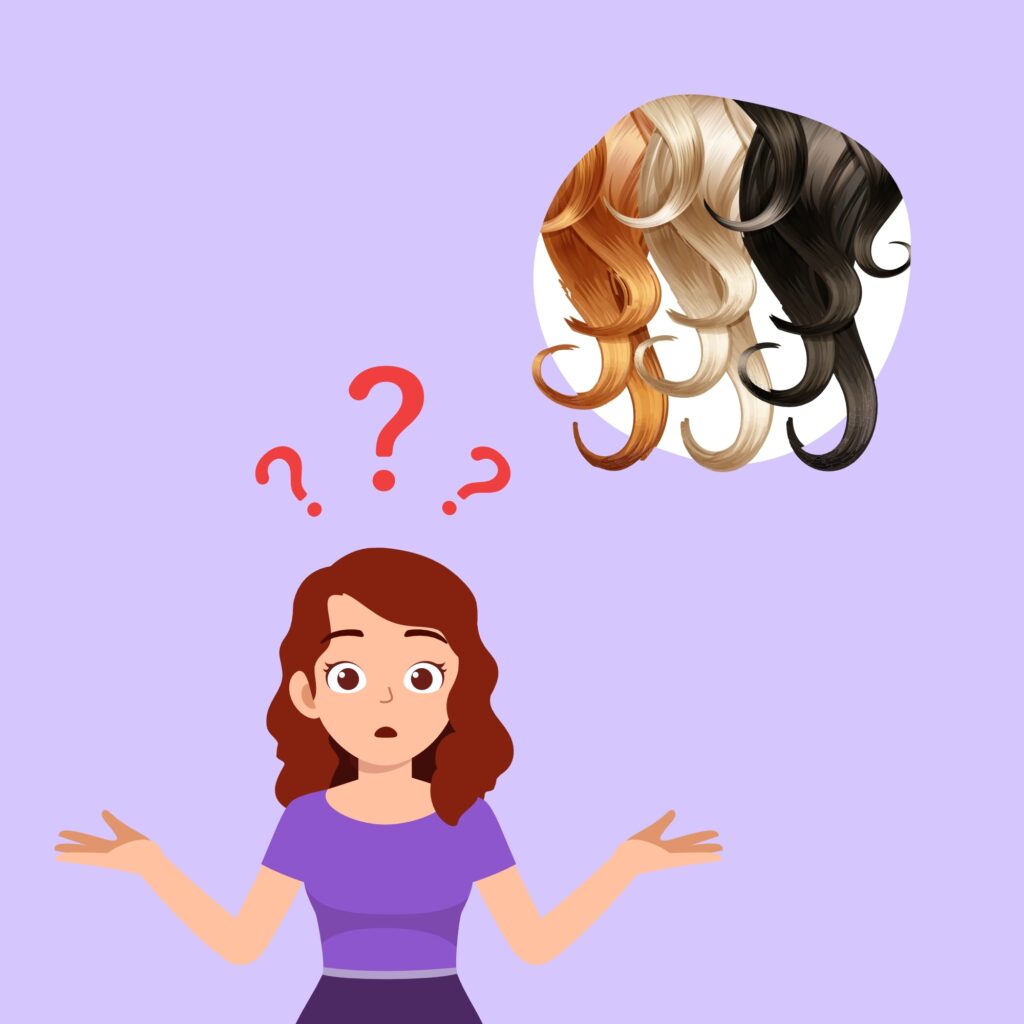
Coloring Considerations
One prevailing myth is that natural hair can’t be colored without severe damage. However, the truth is that with the right knowledge and care, you can explore a world of colors while keeping your natural locks vibrant and healthy.
Understanding Your Hair
- Before diving into color, it’s crucial to understand your hair’s unique characteristics. Natural hair textures, porosity, and overall health play a significant role in how color behaves on your hair.
- Hair porosity is particularly vital, as it determines how well your hair can absorb and retain color. Knowing your hair’s porosity can guide your color choices and application methods.
Choosing the Right Color
- Opt for colors that complement your skin tone and match your desired look. It’s essential to consider whether you want a subtle change or a bold transformation.
- Temporary or semi-permanent dyes are excellent options for experimenting with color without committing to a long-term change.
Safe Coloring Techniques
Now that you’ve considered the basics let’s explore safe techniques for coloring your natural hair while preserving its health and integrity.
Preparation is Key
- Deep condition your hair before coloring to ensure it’s well-hydrated and can better withstand the coloring process.
- If you’re using a permanent color, perform a strand test to assess how your hair will react to the dye. This can help you avoid unexpected results.
Protective Measures
- Use a color-protecting shampoo and conditioner to maintain your color’s vibrancy and extend its lifespan.
- To shield your hair from heat styling, consider using a heat protectant spray before using hot tools.
Balanced Maintenance
- After coloring, it’s crucial to strike a balance between moisture and protein. Deep condition regularly to replenish lost moisture, and consider protein treatments to strengthen your hair.
- Avoid frequent washing, as it can strip color prematurely. Instead, use sulfate-free, color-safe shampoos and conditioners when needed.
Tips for Coloring Success
- Seek Professional Help: If you’re new to coloring or want a complex transformation, consider consulting a professional colorist who specializes in natural hair. They can provide expert guidance.
- Use Gloves: When applying color at home, always use gloves to protect your hands from staining.
- Rinse with Cool Water: After coloring, rinse your hair with cool water to help seal the hair shaft and lock in color.
- Maintain Patience: Achieving the perfect color may require multiple sessions or touch-ups. Be patient and allow your hair time to recover between treatments.
Myth #7: Protective Styles Guarantee Hair Growth
The belief is that protective styles hold the key to achieving rapid hair growth. It’s a myth that has circulated widely, offering the promise of longer, healthier locks to those who embrace it.
The Protective Style Hype
One of the most pervasive myths in the natural hair community is the belief that protective styles alone guarantee rapid hair growth. While protective styles can be beneficial, it’s essential to understand the nuances and the role they play in your hair growth journey.
What Are Protective Styles?
- Protective styles encompass a variety of hairstyles that tuck away the ends of your hair, reducing exposure to environmental damage and daily manipulation. These styles include braids, twists, weaves, and more.
The Reality of Protective Styles
- Protective styles can help minimize breakage, which, in turn, can aid in retaining length. However, they do not directly stimulate hair growth from the scalp.
- Hair growth primarily occurs at the scalp, and while protective styles safeguard your ends, they don’t affect the speed at which your hair grows from the roots
Balancing Care and Styling
Debunking the myth of protective styles as miracle hair growth solutions requires understanding the importance of a balanced approach to natural hair care.
Protective Style Care
- While wearing protective styles, it’s crucial to continue caring for your hair and scalp. Moisturize your scalp, cleanse when necessary, and maintain a healthy routine beneath the protective style.
- Avoid keeping protective styles in for too long, as this can lead to matting, tangling, and breakage. The recommended duration varies depending on the style, but it’s typically advised to keep them in for 6-8 weeks at most.
Scalp Health
- Healthy hair growth starts at the scalp. Ensure your scalp is clean, well-moisturized, and free from buildup, which can hinder growth.
- Gentle scalp massages can stimulate blood flow and promote a healthy environment for hair growth.
Tips for a Balanced Approach
- Choose Low Tension Styles: Opt for protective styles that don’t put excessive tension on your hairline or scalp to avoid damage.
- Moisturize Regularly: Even when wearing protective styles, continue to moisturize your hair and scalp to prevent dryness and breakage.
- Monitor Your Hair: Regularly check the condition of your hair beneath the protective style to ensure it remains healthy. If you notice any issues, address them promptly.
- Take Breaks: Give your hair breaks between protective styles to prevent stress on the hair shaft.
Conclusion
Throughout this exploration, we’ve debunked seven common myths that have often cast shadows on the natural hair experience. From understanding the intricate science of hair growth to dispelling misconceptions about washing, straightening, managing, and even coloring your natural locks, we’ve equipped you with the knowledge needed to navigate your unique hair journey with confidence. Remember that your natural hair is a canvas for self-expression, a testament to your beauty, and a reflection of your individuality.

